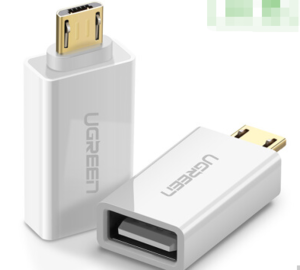How to Install Applications on POS Systems: Difference between revisions
No edit summary |
No edit summary |
||
| Line 1: | Line 1: | ||
== | == Using ADB Commands == | ||
* '''Prerequisites:''' | |||
** ADB commands can only be used in engineer mode terminals. | |||
** Ensure the USB driver is installed on your PC. For Qualcomm modules, download drivers from Qualcomm's official website or compatible driver tools. | |||
http://ftp.wizarpos.com/usbdriver_xp.rar | * '''Driver Downloads for Q1:''' | ||
** ADB Driver: Download from http://adbdriver.com/ | |||
** USB Driver: | |||
*** For Windows 7: http://ftp.wizarpos.com/QUD.WIN.1.1Installer-10039.2.zip | |||
*** For Windows XP: http://ftp.wizarpos.com/usbdriver_xp.rar | |||
** Install Android SDK from Google on your PC. | |||
* '''Installation Steps:''' | |||
== | ** Connect the terminal to the PC. | ||
** Open a DOS window on your PC. | |||
** Enter the command: ''''adb install -r XXX.apk'''' (replace XXX with your APK file name). | |||
== | == Using WizarView == | ||
* WizarView is wizarPOS's terminal management system, allowing remote APK management on terminals. | |||
* To use WizarView, apply for an account from wizarPOS. | |||
== Using a TF-Card == | |||
* '''Folder Creation:''' | |||
** Option 1: Create ''''\wizarpos\homesettings\homesettings_[splashname]\apks''''. Replace ''''[splashname]'''' with the name found in terminal settings (Settings > About POS). | |||
** Option 2: Create ''''\cloudpos\app''''. This requires PosSysAssistant app version 2.11.22 or above. | |||
* '''Installation Process:''' | |||
** Copy the APK files to the created folder. | |||
** Insert the TF-card and start the terminal. | |||
** Follow the on-screen instructions to install the APK. | |||
== | == Using a Thumb Drive == | ||
* '''Setup:''' | |||
** Use a converter to connect the thumb drive to the terminal's micro USB interface. | |||
** The thumb drive functions similarly to a TF-card. | |||
[[File:Microusbchanger.png|frameless|center|thumb|caption]] | [[File:Microusbchanger.png|frameless|center|thumb|caption]] | ||
* '''Follow TF-Card Steps:''' | |||
** Refer to the above TF-card instructions for subsequent steps. | |||
== Additional Resources == | |||
* Refer to the [[How to Select Optimal TF Card (Micro SD Card) for Smart POS Systems]] document for further guidance. | |||
Revision as of 22:19, 7 January 2024
Using ADB Commands
- Prerequisites:
- ADB commands can only be used in engineer mode terminals.
- Ensure the USB driver is installed on your PC. For Qualcomm modules, download drivers from Qualcomm's official website or compatible driver tools.
- Driver Downloads for Q1:
- ADB Driver: Download from http://adbdriver.com/
- USB Driver:
- For Windows 7: http://ftp.wizarpos.com/QUD.WIN.1.1Installer-10039.2.zip
- For Windows XP: http://ftp.wizarpos.com/usbdriver_xp.rar
- Install Android SDK from Google on your PC.
- Installation Steps:
- Connect the terminal to the PC.
- Open a DOS window on your PC.
- Enter the command: 'adb install -r XXX.apk' (replace XXX with your APK file name).
Using WizarView
- WizarView is wizarPOS's terminal management system, allowing remote APK management on terminals.
- To use WizarView, apply for an account from wizarPOS.
Using a TF-Card
- Folder Creation:
- Option 1: Create '\wizarpos\homesettings\homesettings_[splashname]\apks'. Replace '[splashname]' with the name found in terminal settings (Settings > About POS).
- Option 2: Create '\cloudpos\app'. This requires PosSysAssistant app version 2.11.22 or above.
- Installation Process:
- Copy the APK files to the created folder.
- Insert the TF-card and start the terminal.
- Follow the on-screen instructions to install the APK.
Using a Thumb Drive
- Setup:
- Use a converter to connect the thumb drive to the terminal's micro USB interface.
- The thumb drive functions similarly to a TF-card.
- Follow TF-Card Steps:
- Refer to the above TF-card instructions for subsequent steps.
Additional Resources
- Refer to the How to Select Optimal TF Card (Micro SD Card) for Smart POS Systems document for further guidance.

